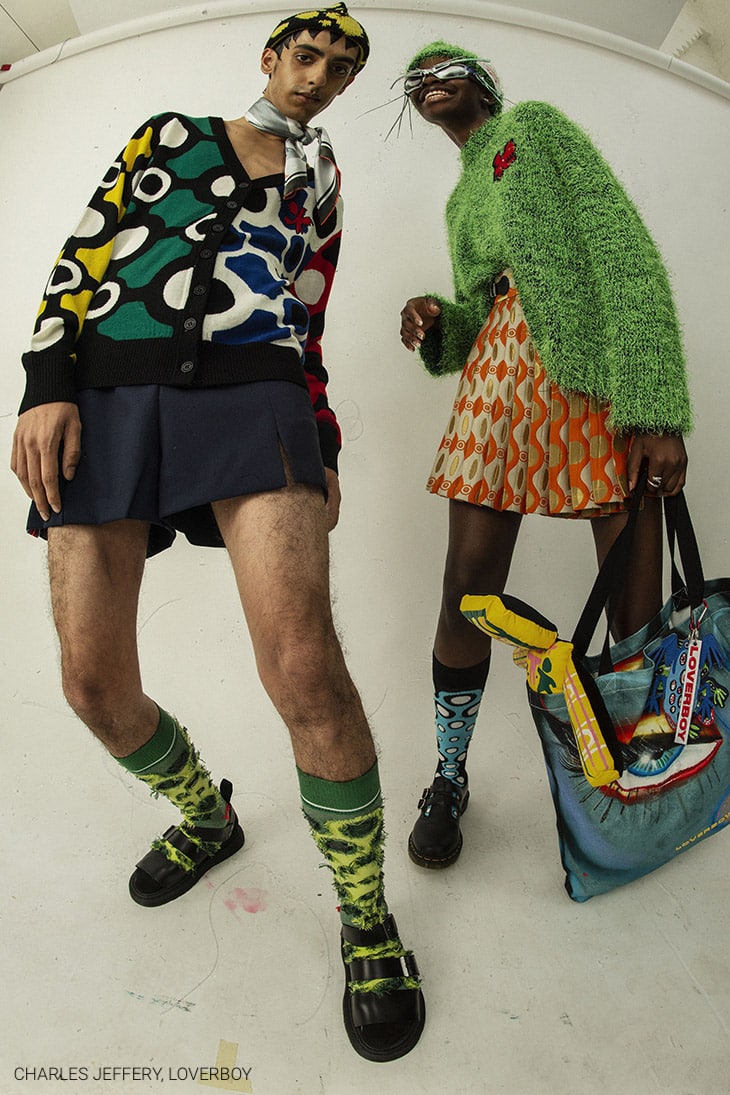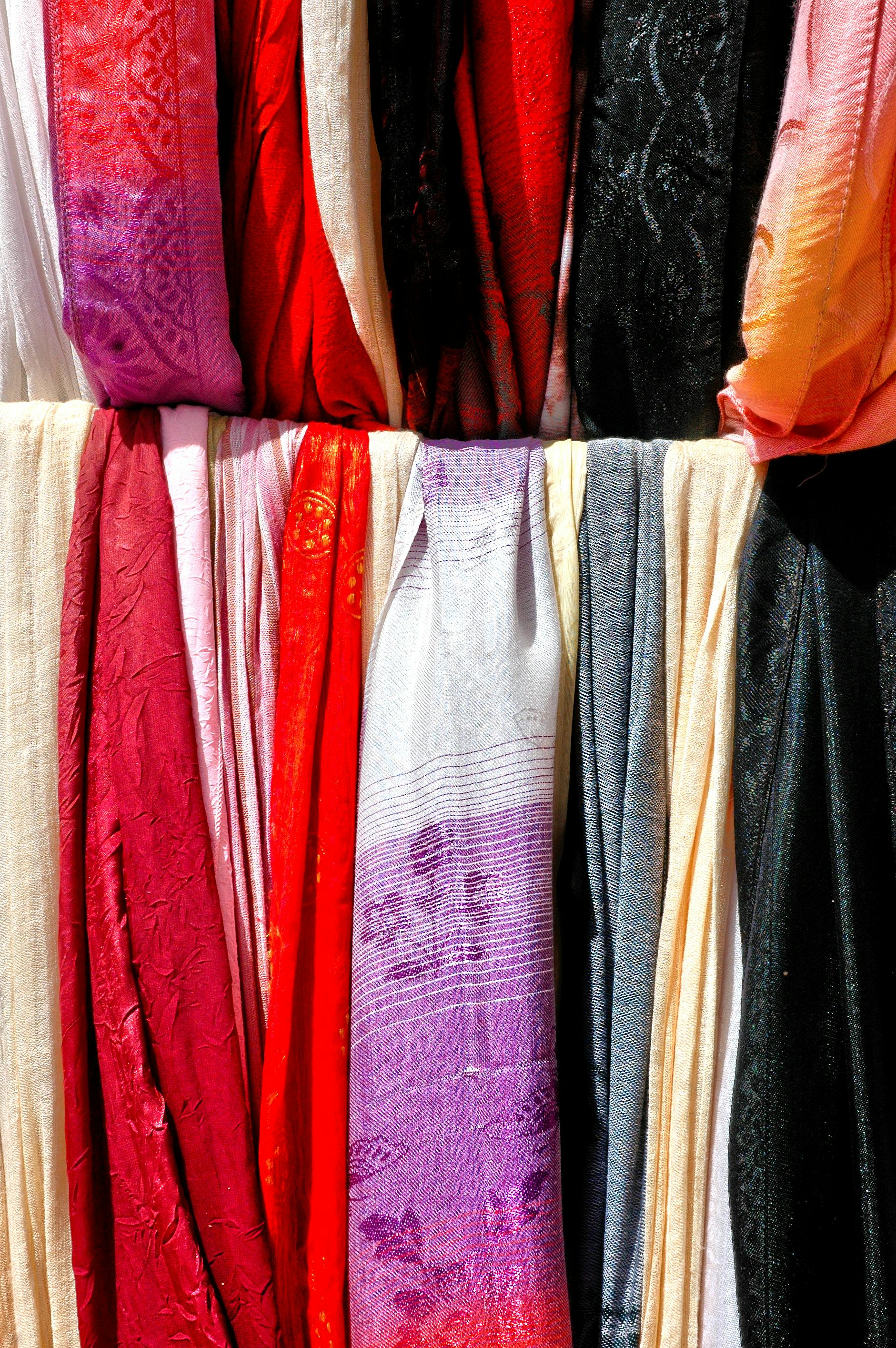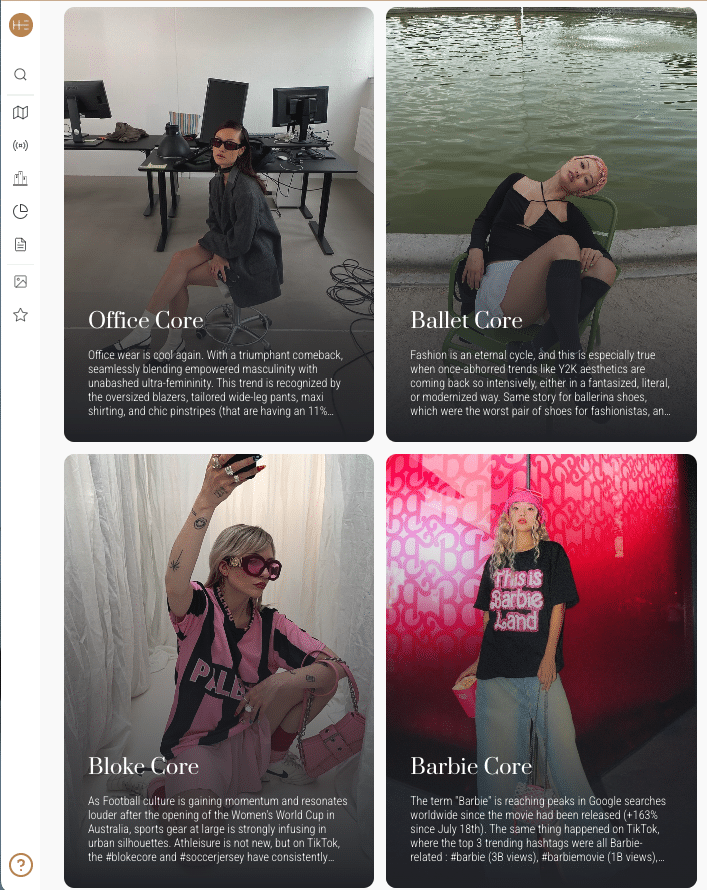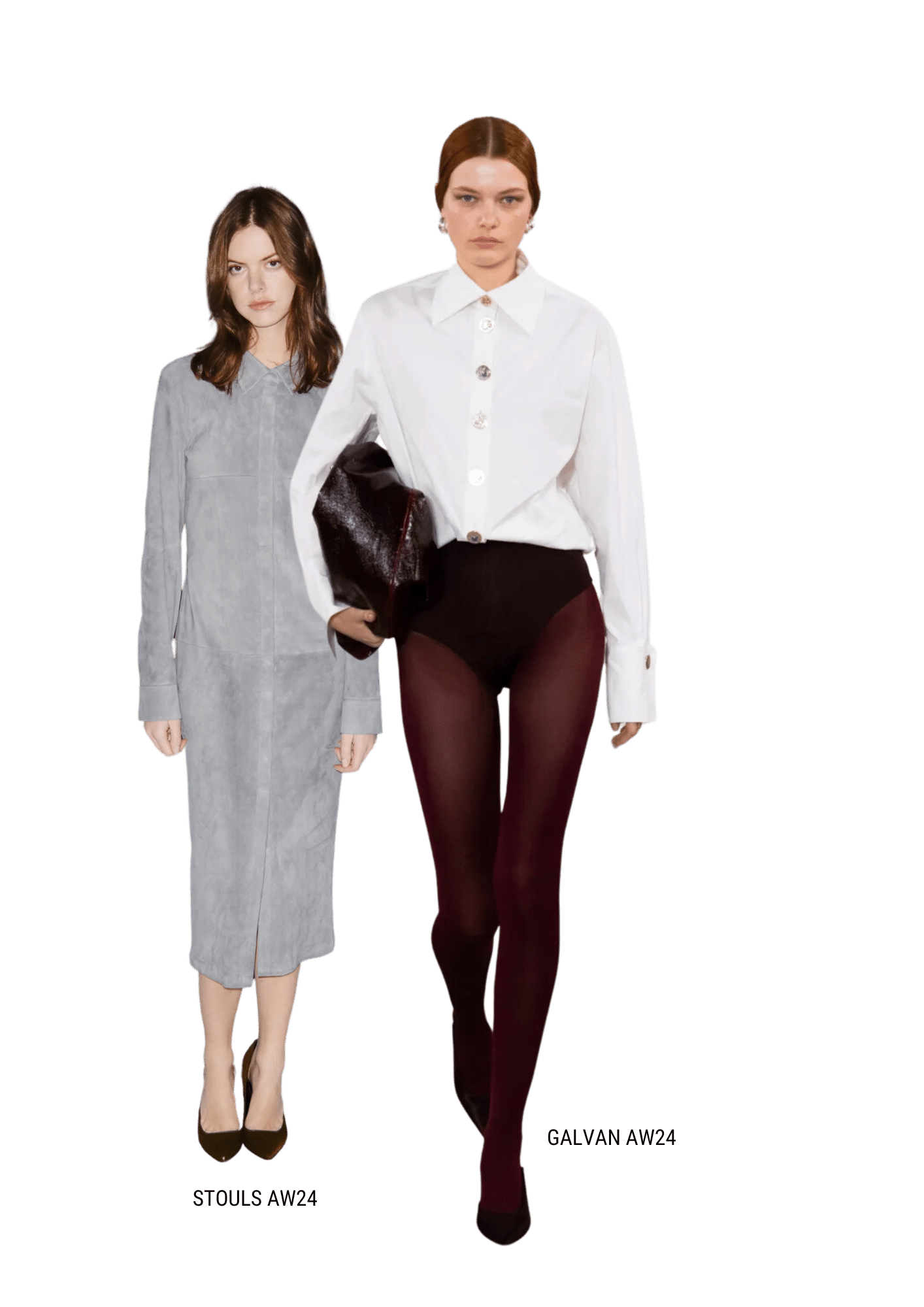Defining Gender Fluidity
Gender fluid, or non-binary fashion, is nothing new. Cultures and epochs across time and space have always experimented with fashion as an expression of gender, reflecting their own notions of gender itself. Today in the West, the binary division of gender into man and woman is beginning to loosen its grip as Gen Zers and millennials challenge society’s imposed boundaries. Indeed, gender fluidity in the fashion industry is gaining momentum, coming out of the shadows to be democratized all across the gender spectrum.
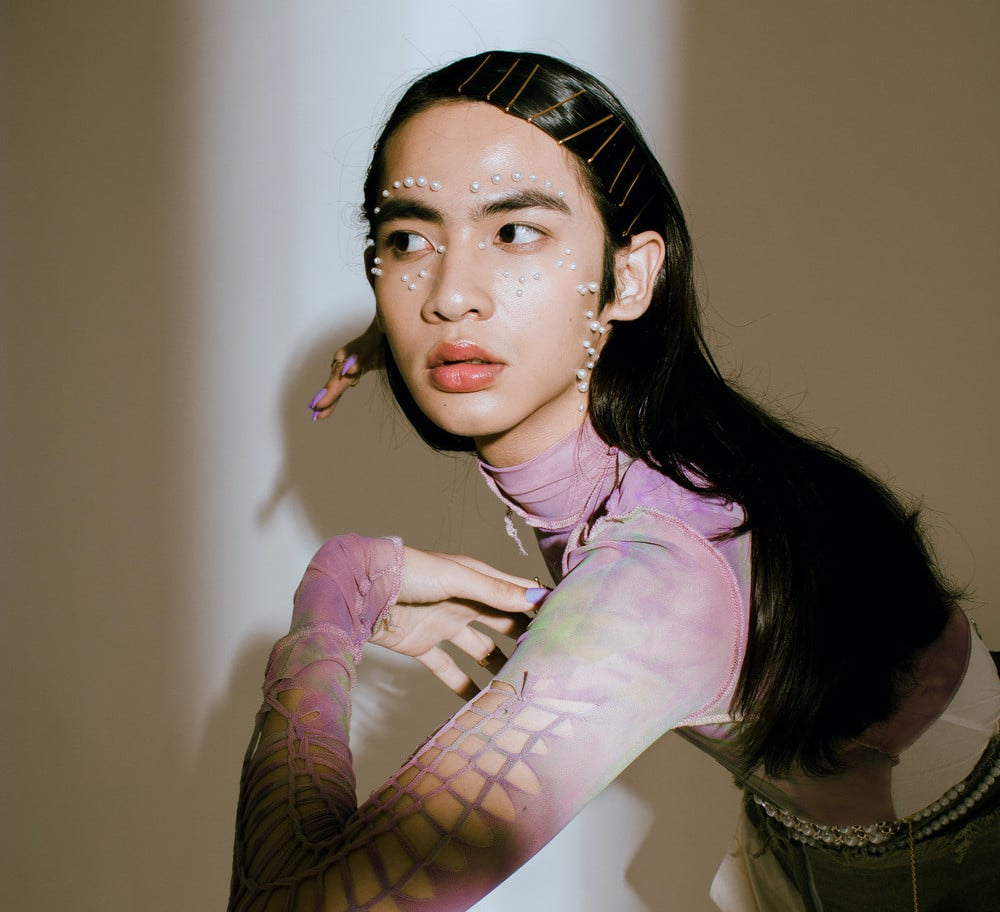
We’re seeing more and more gender-fluid collections, which are not designed nor marketed toward any specific gender and refrain from splitting any item, color, print, pattern, fabric etc., into gender binaries. Simply said: blue is no longer reserved for boys, and pink is not only for girls; anyone can wear any item and style it as they please with no distinctions based on binary norms.
Let’s have a brief look back through the West’s relationship to non-binary fashion, and how it’s evolved to particular trends today, curated by our fashion experts.
Gender Fluidity Throughout History
When gender fluidity preceded gender
In Western fashion history, the divide between men’s and women’s fashion did not always exist. In feudal times, men and women across similar social classes largely dressed the same, as clothing was, beyond being utilitarian, a reflection of status rather than gender.
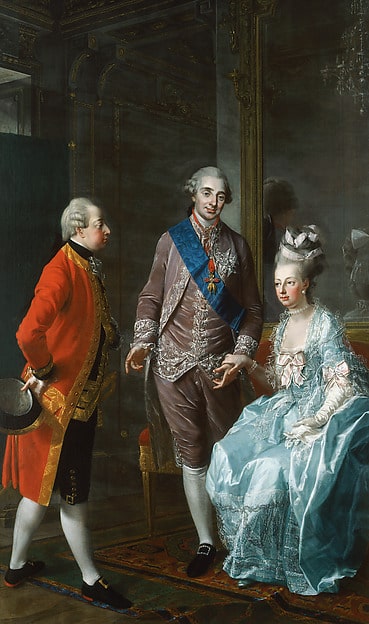
It was only until the transition from a feudal to market economic and societal structure that gendered fashion arose, in which clothing served to separate the men from the women. But even so, gendered fashion is highly transient as society alters its perception of gender roles themselves; eras like the Renaissance in Europe boasted men in lace collars, gold-embroidered capes, and flowing curls.
Image: Louis XVI
The gendered expression of men’s fashion in the West
The evolutive definition of gender and fashion’s reflection of it can be further observed through groups such as the ‘Bright Young Things’ of 1920s and ‘30s England, a group of young socialites and aristocrats who had a penchant for eccentric, opulent fashion. These men remained a transgressive youth subculture in the face of men’s uniform-like fashion of the time.

By the time the 1950s rolled around, men’s fashion was highly homogeneous, consisting of sober business suits and large silhouettes. But soon, the social movements of the 1960s rejected established conventions, of which fashion itself was a part.
A new generation of men began challenging the rigid, binary rules of masculine etiquette. Popular figures including Mick Jagger, Jimi Hendrix, David Bowie, and more welcomed feminine fabrics, flamboyant prints, and effeminate silhouettes, opening the doors to a whole new world of gender-fluid dressing.
From corsets to cargos: Women’s gender-fluid fashion
Around this time, women began feeling safe enough to truly break the boundaries of gendered fashion as well. The brave women of the 1920s and ‘30s fought hard for masculine silhouettes, breaking free of long hair, corsets, and skirts, and their descendents carried the torch into the ‘60s.
In 1966, Yves Saint Laurent introduced le smoking, a tuxedo for women. It offered a thrilling alternative to the ultra-feminine Little Black Dress, which ruled the streets before. After this, not just trousers but pea coats, dress shirts, fedoras, buttoned vests, and blazers with sculptural shoulders became female wardrobe staples.
Right: YSL’s ‘The Tuxedo’

Katherine Hepburn and Marlene Dietrich were the first actresses to wear pants in a major motion picture. Other key figures such as Greta Garbo, Grace Jones, Annie Hall, Pierre Cardin and Andre Courreges also rejected the conventions of femininity, paving the way for the integration of men’s clothes into women’s fashion.
In contrast with the first stances of the tomboy style, the 90s version of it didn’t reject the more “girly” aspects of womenswear altogether; in fact, it blended both, resulting in a new “tomboy chic” by balancing femininity with edgier tones and stealing from the boys’ department.
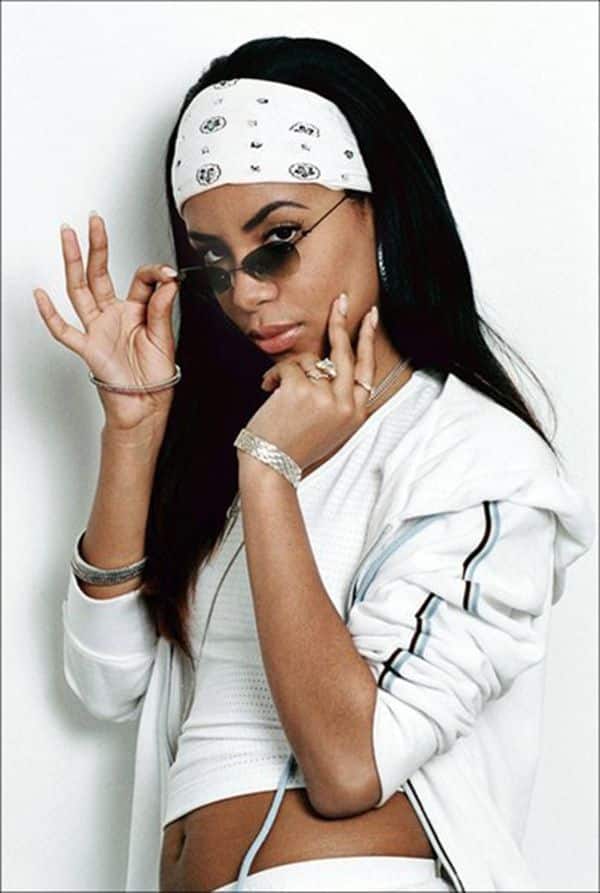
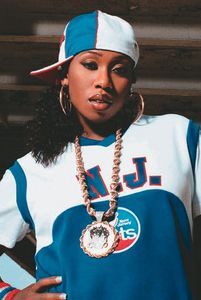
Before ‘90s and 2000s fashion became a throwback trend, it was first a mélange of masculine and feminine elements in fashion influenced by streetwear and music. Trends like midriff-flossing bras, relaxed cargo pants, low-rise jeans, bandanas, heavy jewelry, lip gloss, and more defined the style of the 90s, a legacy still present in many popular trends. Icons like Missy Elliot and Aaliyah broke the mold for urban women in a refreshing way, whose style and street sensibility are emulated today.
State of Play: Gender Fluidity Today
Media representation matters, and fashion can help
In 2022, gender-fluid representation in fashion media is ubiquitous. However, it is important to emphasize that gender fluidity is not just a trend — it is a reality for many people, and gender non-conforming people have always existed throughout history. It is simply their degree of representation that has varied.
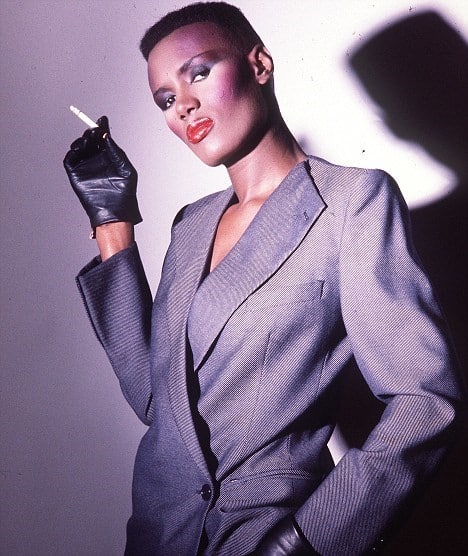
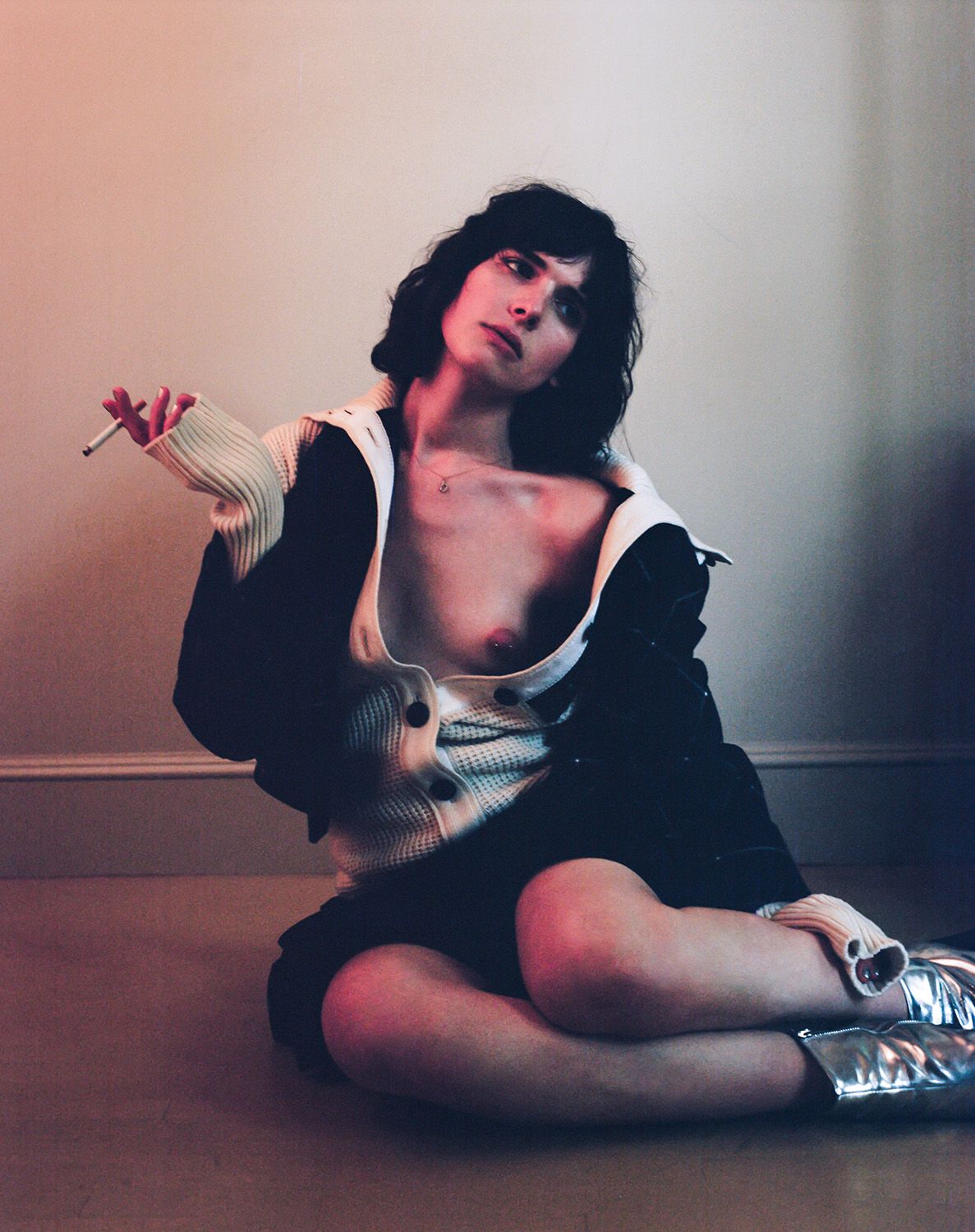
The unprecedented visibility of gender non-conforming people in contemporary media is due, in part, to Gen Z:
- 56% of Gen Z people were “already shopping outside their assigned gender area.” (Rob Smith, founder of the Phluid project, 2019)
- 41% of Gen Z respondents identified as neutral on the gender spectrum, with over half identifying as something other than heterosexual. (Vice, 2021)
As fashion and society as a whole become more open to non-binary and gender-fluid self-expression, it’s important for brands and key fashion players to maintain the momentum. There are already brave faces speaking up for the silent majority.
Key brands paving the way
More and more brands are doing away with traditional gendered collections in favour of unisex or gender fluid offerings to reflect the fact that a large portion of consumers are already shopping clothes outside of their assigned gender. Brands like Tanner Flether are opting for unisex collections that can easily fit any body type, while others simply adapt their merchandising strategy to show men’s pieces in the women’s section and vice versa. Luxury, mainstream, and niche brands are all tapping into the gender fluidity movement. Some notable examples include Gucci, Molly Goddard, and JW Anderson, all of which are leading the way for a more fluid future.
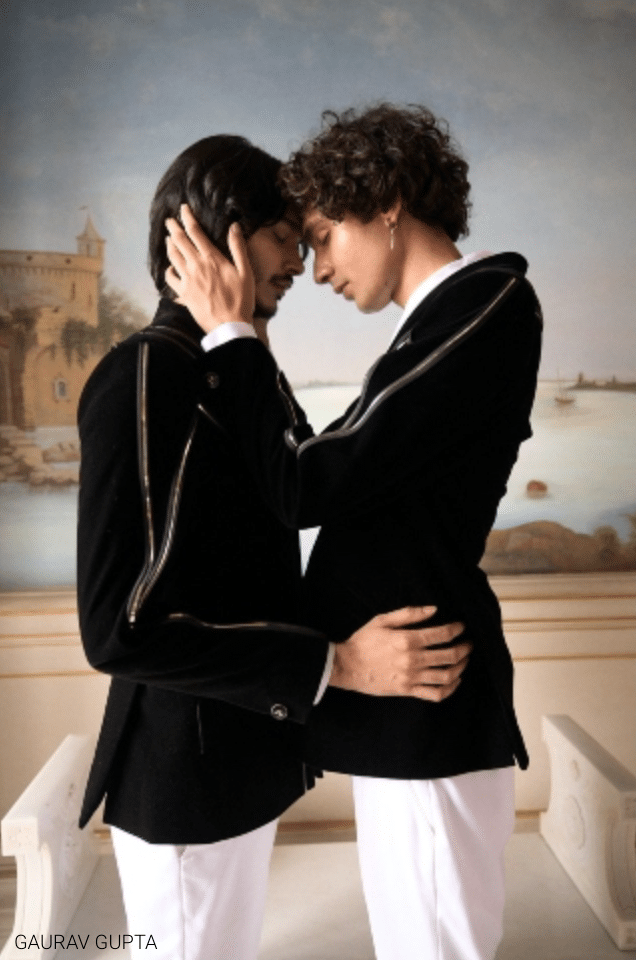
In 2021, for instance, the British Fashion Council announced the London Fashion Weeks would no longer be separating menswear from womenswear. Designers like Gaurav Gupta are creating genderless collections displayed by transgender models, and stars like Jonathan Van Ness and Lil Nas X are challenging the boundaries of menswear.
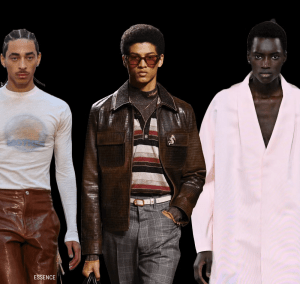
Top gender-fluid trends
Let’s have a look at some of the top gender-fluid trends, curated by our fashion and data expert.
1. Oversized fit
In conventional fashion, for example, narrow waists and broad shoulders are associated with silhouettes for men, while fitted waists and emphasized hips are linked with women. Oversized clothing blurs these silhouettes by not conforming to the typical markers of masculinity or femininity. This allows people to challenge the conventional expectations of how clothing should fit, which in turn mirrors the broader gender-fluid fashion movement. According to Heuritech’s data, oversized shirts are considered a rising star, having increased by +19% in Europe from July to September 2024 compared to the previous year. During the same period, oversized sweatshirts and baggy denim pants increased by +22% and +17%, respectively.
2. Suit up in Pinstripe
As previously mentioned, Yves Saint Laurent introduced Le Smoking—the tuxedo for women—in 1966. In 2024, the suit is completely genderless, representing power, sophistication, and strength. Pinstripe, which was once associated with men’s business attire, is now genderless and seen not only on suits but also on trousers, dresses, and blazers. According to Heuritech’s data, pinstripe continues to grow, with an increase of +10% for men and +33% for women during spring 2024 compared to the previous year. The growing popularity of pinstripe among women reflects how the print has evolved beyond its traditional association with men’s fashion and embraced a new, fluid identity.
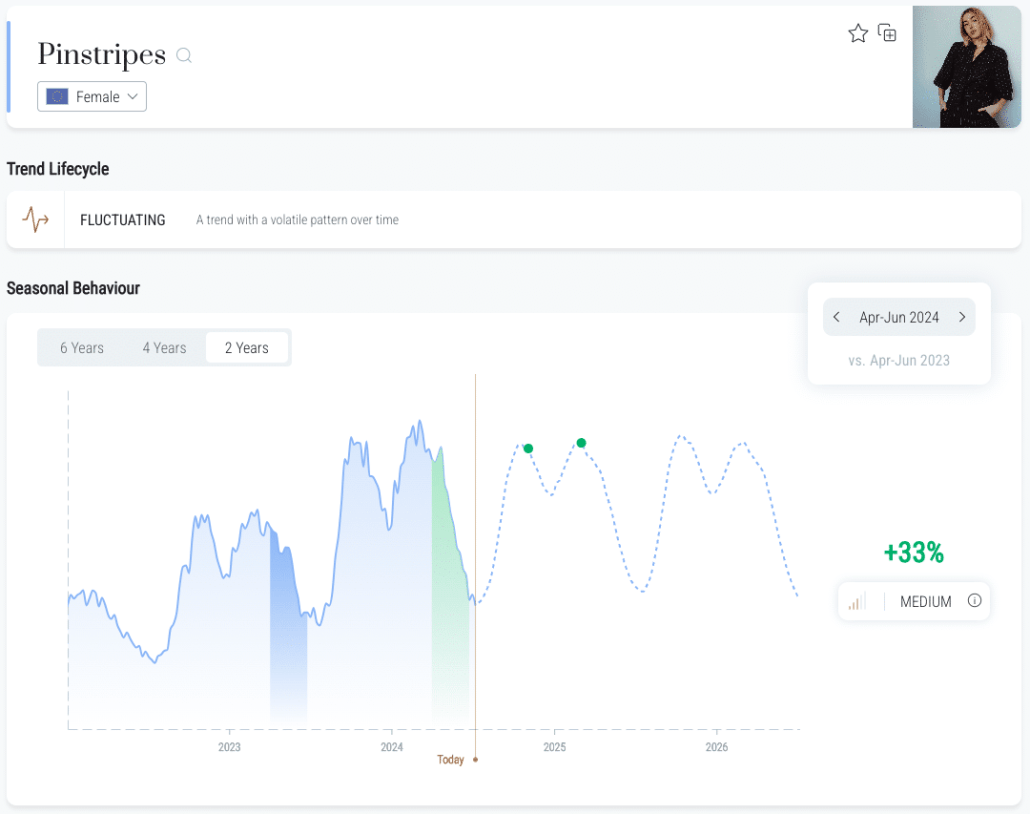
From Heuritech Market Insights platform
3. Sneakers for everyone
A pair of sneakers can be found in anyone’s closet, regardless of age, personal style, or gender. The shoe has evolved into a fashion essential. The genderless appeal is evident in both the way they are designed and worn, as they come in a variety of styles, colors, and patterns. One shoe model in particular with increased visibility is the Retro Football Sneaker. It is a key shape for the Bloke Core trend, which is considered genderless due to its emphasis on practical, comfortable clothing with influences from sports, rather than strict adherence to gender-specific styles. According to Heuritech’s data, this particular shoe model has increased by over +100% for both genders during July-September 2024 compared to the previous year.
4. The boyfriend jeans: A model from men and worn by females
The denim fabric has for as long as one can remember, been associated with genderless fashion. From classic blue jeans to stylish jackets, and everything from a slim to a baggy fit. An increase in baggy jeans for women is evident, and based on Heuritech’s data, the denim model inspired by men and worn by women, known as boyfriend jeans has increased by +37% during spring 2024. This trend is primarily adopted by younger generations such as Gen Z, but also by millennials. This reflects a shift towards fluidity of identity, where younger people more easily prioritise personal expression over conforming to traditional norms.
5. Leather Jacket: When the fit is the only thing that matters
During the latest years a growing interest in purchasing vintage pieces has grown bigger. In particular to find the perfect vintage leather jacket is something every fashion forward person seems to be on the hunt for. On the racks of many vintage stores is the gender not even specified and the customer browse freely without even reflecting whether the jacket originally was made for a man or women. The only thing that matters is if the fit is good or not. Leather as a material has increased with +9% and the Leather Jacket with +10% between July and September compared to previous year. In addition it is mainly adopted by Gen Z and has a big magnitude.
